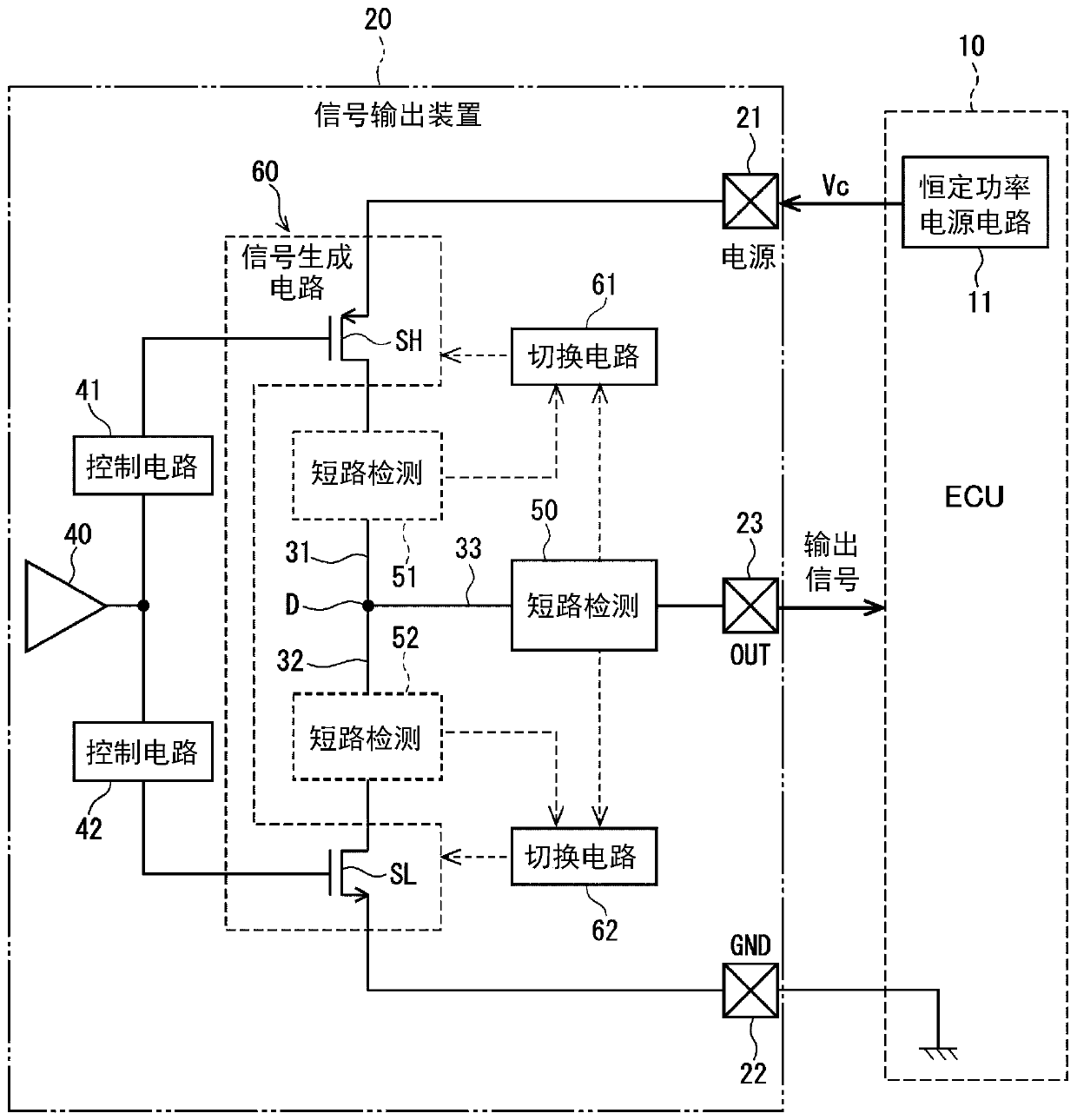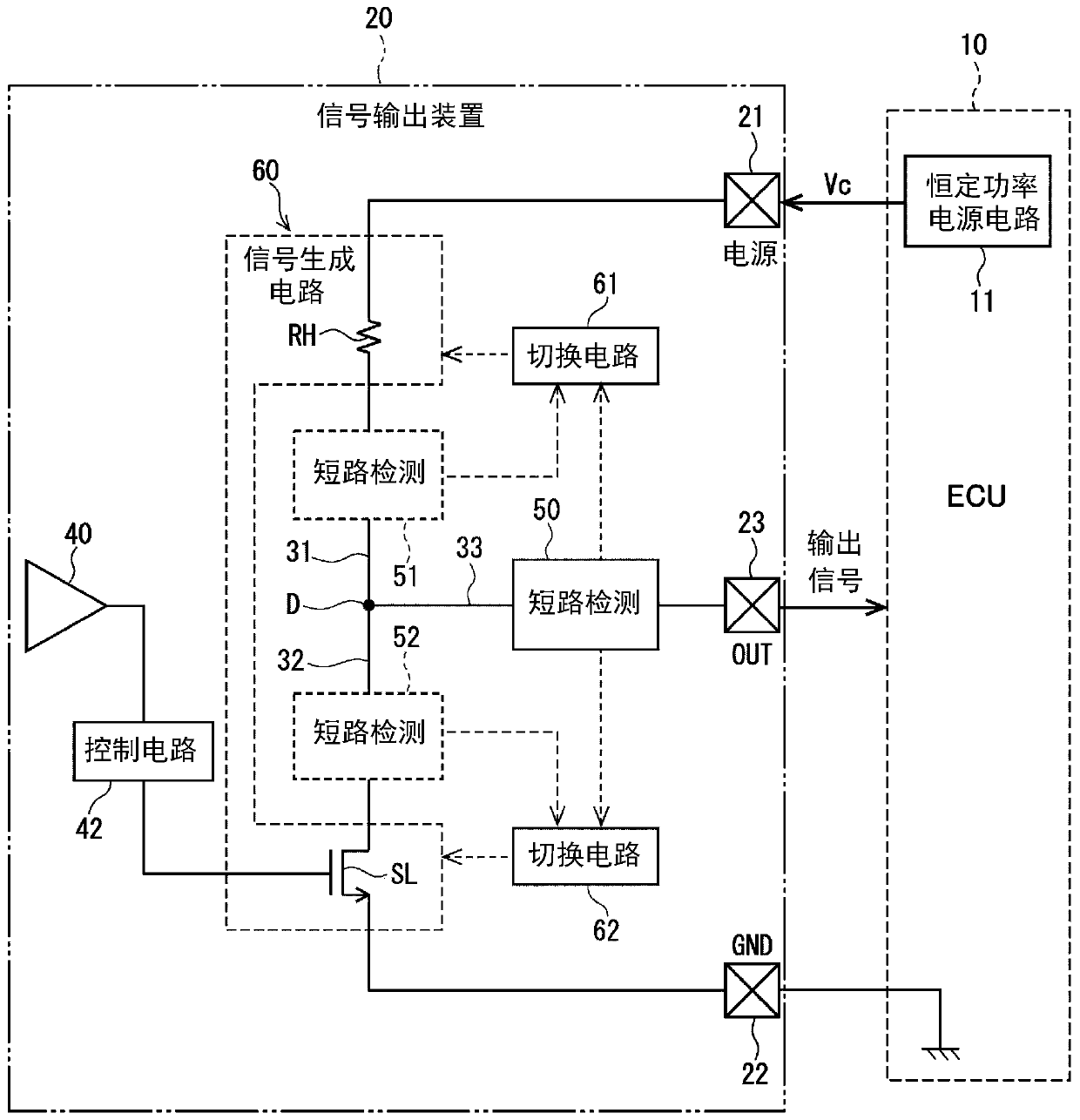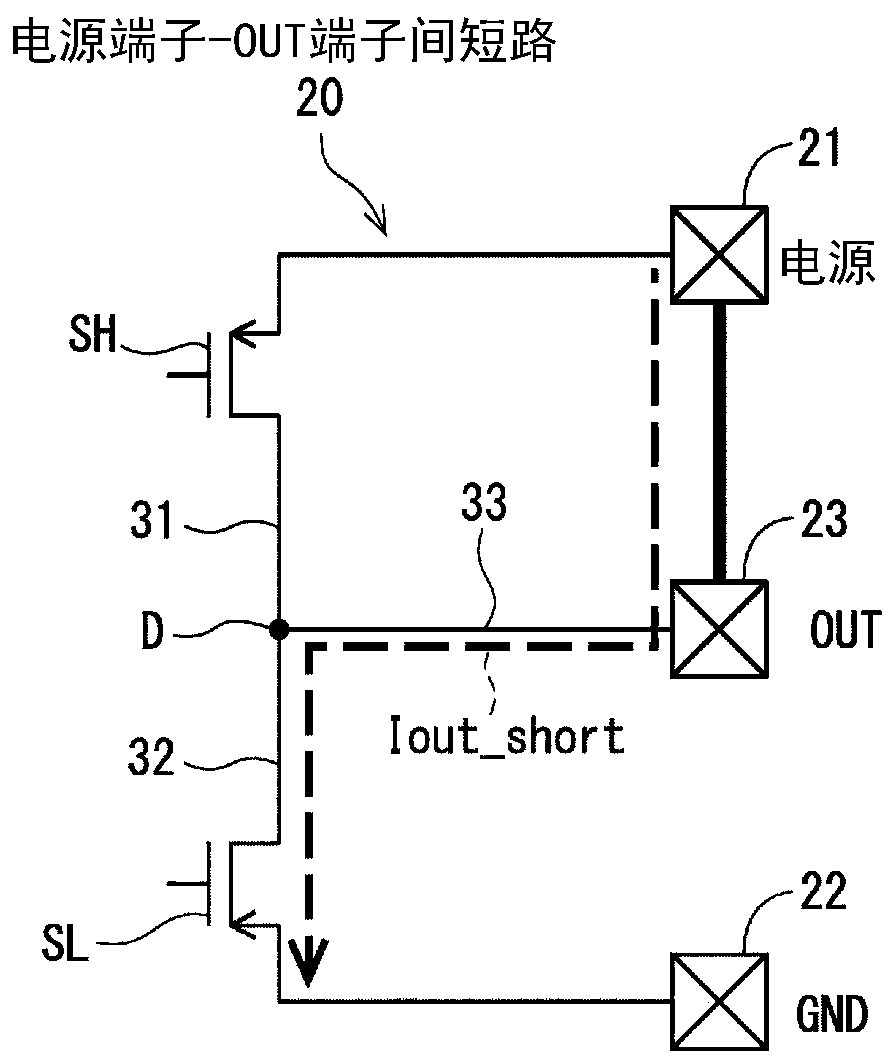Signal output device
A signal output and signal generation technology, applied in signal transmission systems, transportation and packaging, instruments, etc., can solve problems such as unable to restore output, unable to ensure system stability, etc., to achieve the effect of ensuring stability and preventing adverse effects
- Summary
- Abstract
- Description
- Claims
- Application Information
AI Technical Summary
Problems solved by technology
Method used
Image
Examples
no. 1 Embodiment approach
[0085] Figure 11 The signal generating circuit 601 of the first embodiment shown includes gate voltage regulators 71 and 72 for adjusting the gate voltages of the switching element SH on the upper line 31 and the switching element SL on the lower line 32 , respectively. When a short circuit is detected, the switching circuits 61 and 62 lower or raise the gate voltages of the switching elements SH and SL to switch the conduction capability of the signal generating circuit 601 to reduce the conduction current. In the Nmos transistor, the gate-source potential difference becomes smaller by lowering the gate voltage, and the conduction current is reduced. In the Pmos transistor, by raising the gate voltage, the gate-source potential difference becomes smaller, and the conduction current decreases.
no. 2 Embodiment approach
[0087] Figure 12 The signal generation circuit 602 of the second embodiment shown includes mirror elements MSH, MSL, and mirror elements MSH for connecting the gates of the switching element SH of the upper line 31 and the switching element SL of the lower line 32 to each other. , MSL-connected current regulators 71, 72. When a short circuit is detected, the switching circuits 61 and 62 reduce the conduction capacity of the signal generation circuit 602 by reducing the current amount of the current source serving as a reference of the switching elements SH and SL compared to the normal time, thereby reducing the conduction current. Small.
no. 3 Embodiment approach
[0089] Figure 13 In the signal generating circuit 603 of the third embodiment shown, two switching elements SH1 and SH2 are connected in parallel to the upper line 31 , and two switching elements SL1 and SL2 are connected in parallel to the lower line 32 . The gate of the switching element SH2 is connected to the control circuit 41 via a relay (relay) Ry2 , and the gate of the switching element SL2 is connected to the control circuit 42 via a relay Ry4 . Normally, relays Ry2 and Ry4 are connected, switching elements SH1 and SH2 and switching elements SL1 and SL2 are all turned on, and a large conducting current can be energized by parallel connection.
[0090] When a short circuit is detected, the switching circuits 61 and 62 turn off the relays Ry2 and Ry4 so that the switching elements SH2 and SL2 are no longer conductive. Therefore, only one switching element SH1 is turned on in the upper line 31 , and only one switching element SL1 is turned on in the lower line 32 , and...
PUM
 Login to View More
Login to View More Abstract
Description
Claims
Application Information
 Login to View More
Login to View More - R&D
- Intellectual Property
- Life Sciences
- Materials
- Tech Scout
- Unparalleled Data Quality
- Higher Quality Content
- 60% Fewer Hallucinations
Browse by: Latest US Patents, China's latest patents, Technical Efficacy Thesaurus, Application Domain, Technology Topic, Popular Technical Reports.
© 2025 PatSnap. All rights reserved.Legal|Privacy policy|Modern Slavery Act Transparency Statement|Sitemap|About US| Contact US: help@patsnap.com



